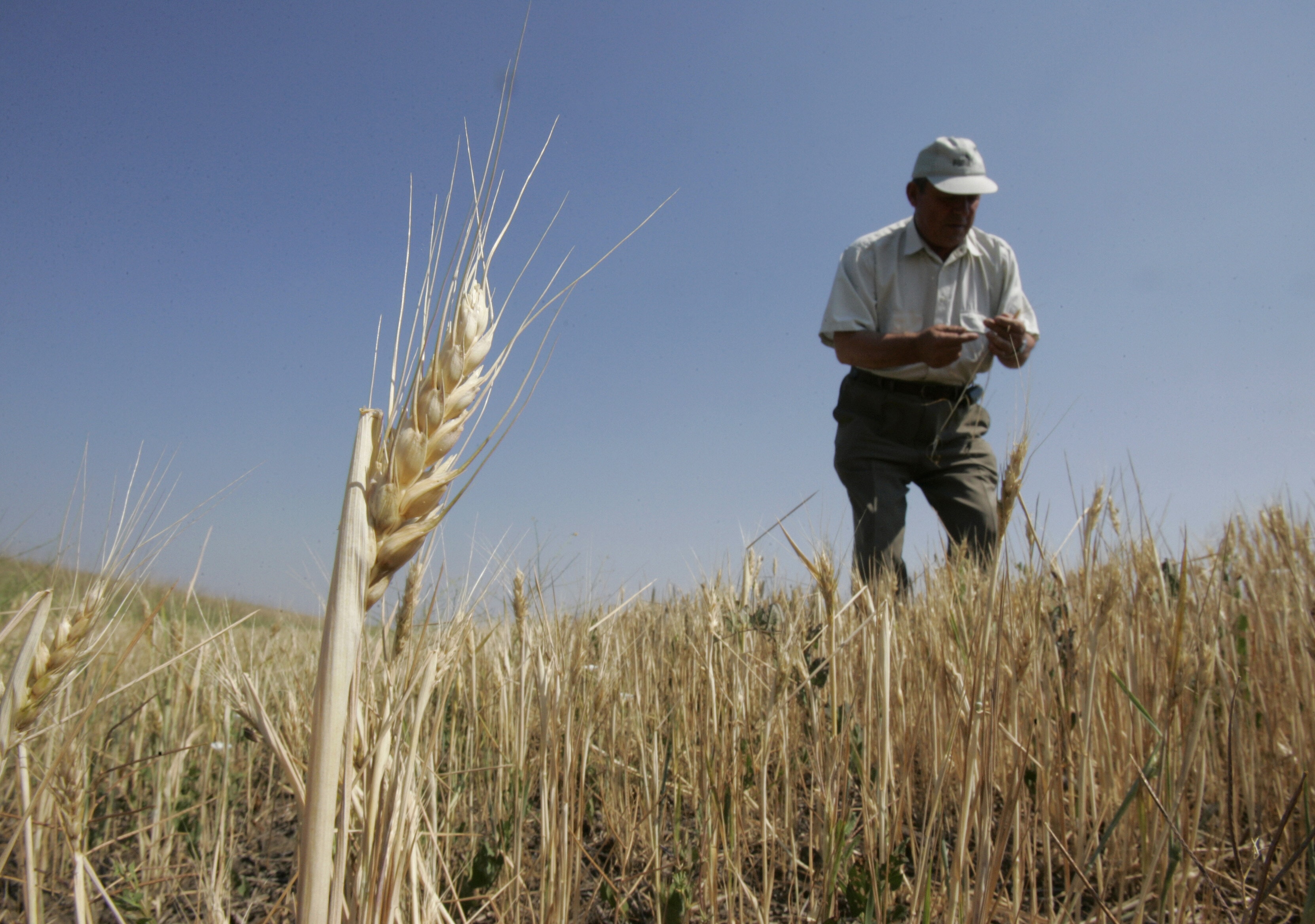Mali farmers are using hybrid crops to fight drought

Some areas of Northern Mali receive no more than two months of rain a year.
Image: REUTERS/Heino Kalis - RC1D52A2BDC0
Stay up to date:
Fresh Water
Last year, when drought hit in the middle of the growing season in his region of southern Mali, Baba Berthé lost his entire two-hectare maize crop. "I harvested nothing at all," remembers the white-robed farmer with a greying goatee.
But disaster was averted when a plot of drought-resistant sorghum he had also planted flourished despite a lack of water.
That crop "saved me," producing 2.4 tonnes of grain from one hectare (2.5 acres) of land, said the farmer from rural Siby district.
As climate change brings wilder weather in the Sahel - particularly worsening drought - planting crops able to stand up to extremes can help avert a range of crises, from worsening hunger to migration, experts say.
In southern Mali, hardier crops are gaining ground, particularly as farmers see the results in their own fields, they say.
"I really understood the importance of these new strains last year," said Berthé, 56, sitting beneath a large mango tree during a weekly meeting of the Siby Seed Growers' Cooperative.
Maize, he said "is a grain that needs a lot of water" - something southern Mali no longer reliably has.
The new hardy grain varieties were developed by scientists at the Rural Economy Institute (IER), a research institute founded by the Malian government, to respond to the varying levels of rainfall in the country, said Abdoulaye Diallo, a seed breeder and the head of IER's sorghum programme.
"We are being confronted by the effects of climate change," he said.
Over the past 60 years, he said, rainfall has fallen 15 to 20 percent in Mali, depending on the region, and that has hit harvests.
Malian farmers work their fields during the rainy season, which lasts from June to October in some parts of the country's south. But further north, the season is shorter, with some areas getting no more than two months of rain a year.
To cope with the harsh conditions, Malian researchers have in some cases created hybrids that cross traditional local crops with other study varieties.
Diallo said hybrid grains, like the sorghum that Berthé planted, can produce a yield of three to four tonnes per hectare, compared to non-hybrid varieties that manage two to three tonnes even in a good season.
"The challenge was to find varieties that can withstand drought after flowering," said Aboubacar Touré, a seed breeder at the IER.
Varieties successful in standing up to drought usually need to flower early, be drought-resistant or both, he said.

'Full basket'
As a growing number of farmers in Siby turn to planting new seed varieties to protect themselves against climate shocks, local seed producers are enjoying a boost in their income.
Alou Camara, president of the Siby Seed-Growers' Cooperative, said it buys seeds capable of dealing with the changing conditions from its members for 500 CFA francs ($1) per kilogramme and sells them to other farmers for 750 CFA francs, five times what traditional seed costs.
Even so, "everything we produced in the way of seed was bought last year, and the previous year was the same," Camara said.
Touré at the IER said small-scale farmers have given the new sorghum varieties names in the local language that "speak volumes" about their success. Seguifa, for instance, means "full basket", while jakumbè means "anti-drought".
But praise for the new crop strains is not unanimous. Some farmers complain they can't always afford to buy the drought-resistant strains they have come to rely on.
In previous years, farmers would simply use the seeds from one harvest to plant the next season's crop.
But the hybrid qualities of the new varieties reduce over time, Siby farmer N'fally Coulibaly said, which means he and other farmers would like to buy new seed each year.

"The problem with the new varieties is that they are not free, and just before the rainy season we don't have any money. It wasn't like that before," Coulibaly said.
Another problem, he said, is the shortage of information about the characteristics of the new varieties - and the bad publicity that accompanied their introduction.
"Lots of people were hesitant at first because they thought these were GM (genetically-modified) crops" - which turned out not to be the case, he said.
Coulibaly would like to see more effort put into explaining to farmers the difference between hybrid seeds, which are developed in the field using natural techniques, and genetically-modified seeds created in a lab.
"That had a major influence on take-up in the beginning," he said.
"But, once the droughts came, people quickly saw the superior yields and changed their minds," he said.
(Reporting by Soumaila Diarra, Editing by Jumana Farouky. Please credit the Thomson Reuters Foundation, the charitable arm of Thomson Reuters, that covers climate change, humanitarian news, women's and LGBT+ rights, human trafficking and property rights. Visit http://news.trust.org)
Don't miss any update on this topic
Create a free account and access your personalized content collection with our latest publications and analyses.
License and Republishing
World Economic Forum articles may be republished in accordance with the Creative Commons Attribution-NonCommercial-NoDerivatives 4.0 International Public License, and in accordance with our Terms of Use.
The views expressed in this article are those of the author alone and not the World Economic Forum.
Related topics:
Forum Stories newsletter
Bringing you weekly curated insights and analysis on the global issues that matter.
More on Nature and BiodiversitySee all
David Elliott
August 27, 2025
Tom Crowfoot
August 20, 2025
Chavalit Frederick Tsao
August 19, 2025
Andrea Willige
August 15, 2025
Tom Crowfoot
August 14, 2025






